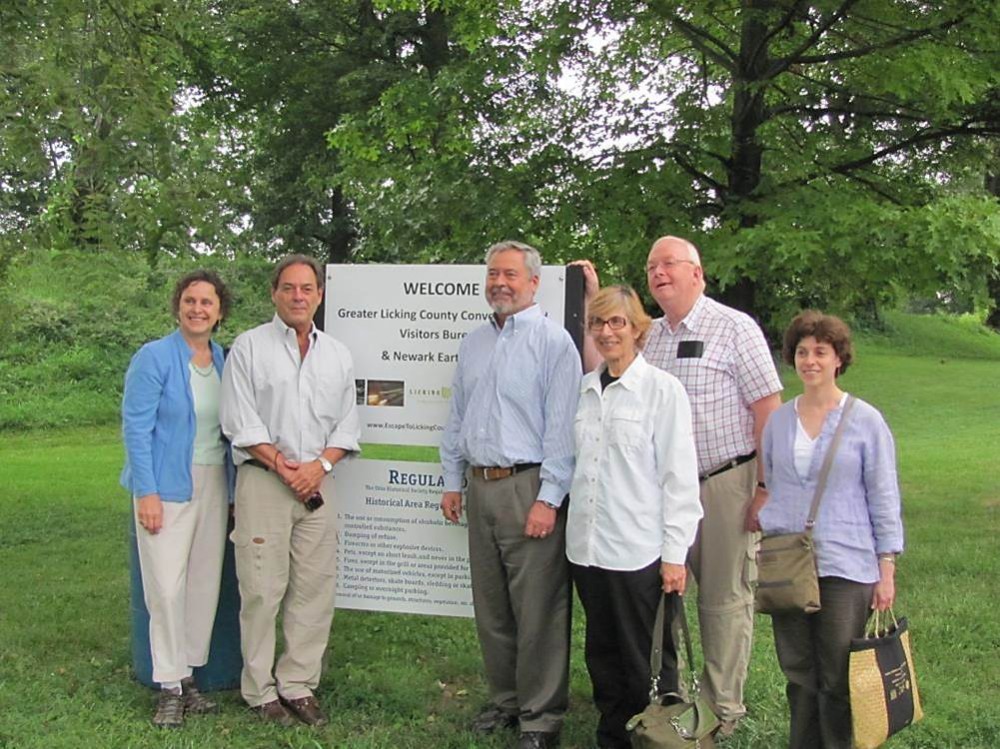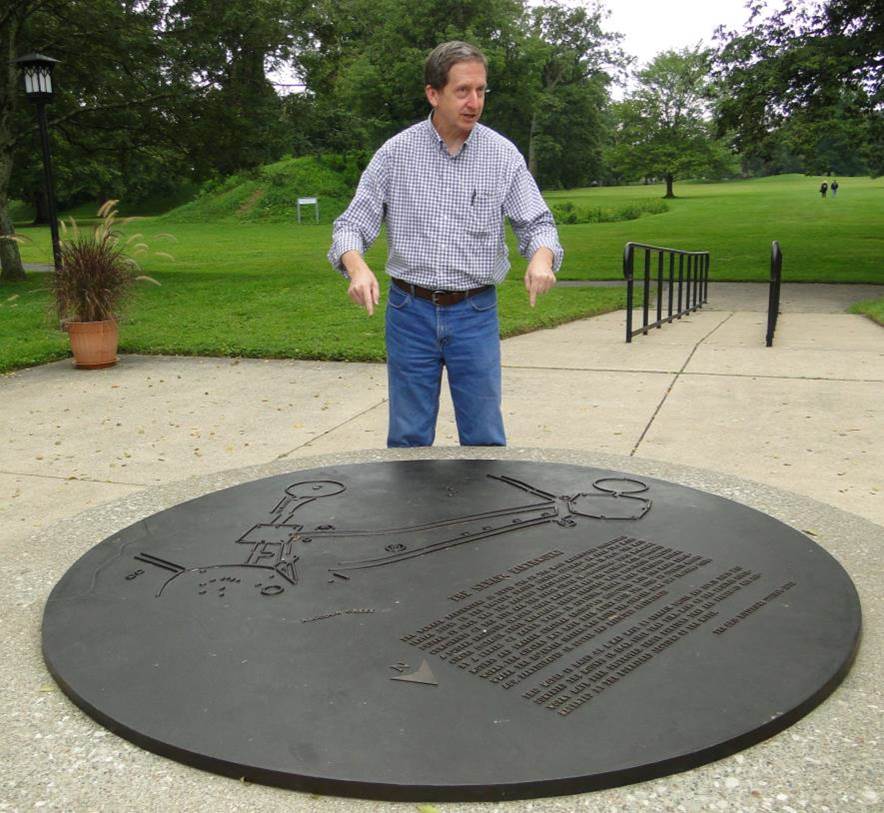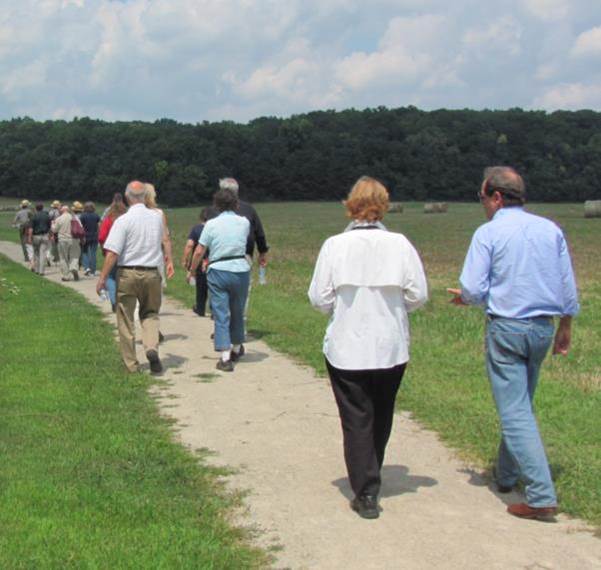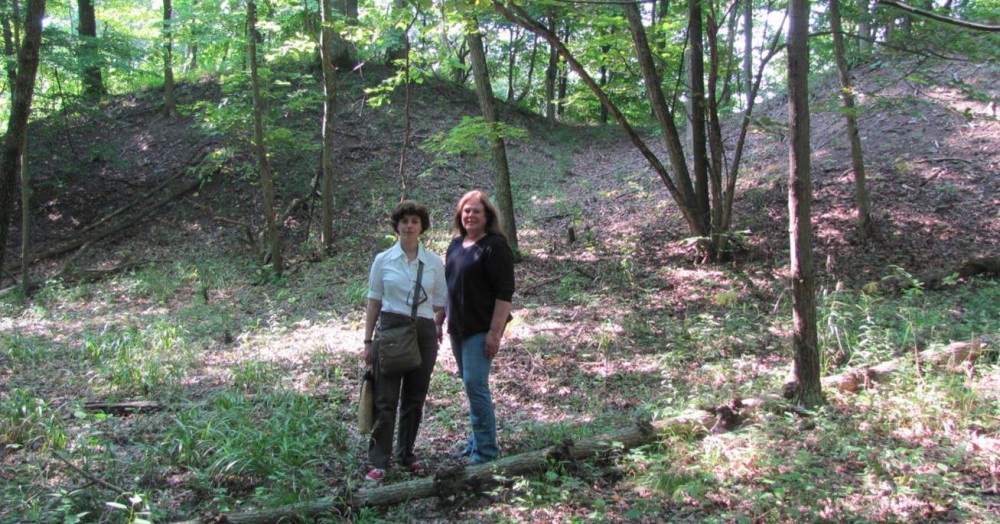Welcome to Our Summer Interns!
Meet Grayson and Grace—two of our outstanding summer interns at the Ohio History Connection!

Our World Heritage Expert Panel. From left to right, Patricia O’Donnell, Gustavo Araoz, Douglas Comer, Helaine Silverman, Willem Willems, and Phyllis Ellin.
From Sunday August 18th to Tuesday the 20th I had the privilege of participating in a road trip to six of the most amazing ancient earthwork sites in the world. On Sunday we toured the Newark Earthworks, on Monday we walked through four of the five sites comprising Hopewell Culture National Historic Park, and we spent Tuesday morning at Fort Ancient. Together, these sites constitute the Hopewell Ceremonial Earthworks a set of sites that is on the United States Tentative List of places being considered for nomination to the UNESCO World Heritage List.
My colleagues and I are convinced these sites belong in the company of Stonehenge, the Great Wall of China and the Parthenon, but we realize that we have to make our case in a thorough and convincing nomination document. So we invited a panel of six experts on World Heritage to join us. We wanted them to experience the sites and offer their views on whether the various earthworks measured up to World Heritage standards. The panel included Gustavo Araoz, President of the International Council on Monuments and Sites (ICOMOS), Douglas Comer and Willem Willems, co-presidents of the ICOMOS Committee for Archaeological Heritage Management (ICHAM), Helaine Silverman, Peruvian archaeologist and member of ICHAM, Patricia ODonnell, UNESCO World Heritage Expert Member specializing in cultural landscapes, and Phyllis Ellin, historian with the National Park Services Office of International Affairs and a key person in the United States World Heritage Program.

Brad Lepper at Newark’s Great Circle. Photograph courtesy of Helaine Silverman.
Also on the bus were two representatives of Native American tribes historically associated with Ohio: Glenna Wallace, Chief of the Eastern Shawnee Tribe of Oklahoma and Billy Friend, Chief of the Wyandotte Nation. Chief Wallace pointed out that the Shawnee was the first American Indian tribe to be forcibly removed from Ohio, whereas the Wyandotte was the last. We started each day with meetings to which local community leaders were invited to learn what World Heritage inscription might mean for their communities as well as the State of Ohio. The panel suggested that we should begin planning now both to make the most of the economic opportunities and to insure that potential negative impacts would be minimized.

The expert panel tours Hopewell Mound Group.
We ended each day with long discussions about the sites wed visited that day. The panel identified issues at each site, some more serious than others, that will need to be addressed before the nomination moves forward. By the end of the road trip, everyone was convinced that the Hopewellian achievement represented at these sites is worthy of World Heritage recognition.
After seeing the Newark Earthworks, Gustavo Araoz said, “This is not traditional architecture. This is something else. This is something I’ve never encountered before”. At the final meeting, he joked that we could practically skip the comparative analysis section of the nomination document, because there was nothing else in the world to which it could be meaningfully compared.
World Heritage inscription for the Hopewell Ceremonial Earthworks won’t happen overnight and we’ve still got a lot of work to do. I’m now convinced, however, that it’s going to happen. Various studies suggest that heritage tourism can become an economic engine for Ohio and especially for the counties and local communities most closely associated with these sites. That’s hugely important, but my focus is to share these sites with the world. The remarkable accomplishments of Ohios indigenous cultures should be as widely appreciated as those of the ancient Egyptians, Greeks, or Romans. And when the world comes to Ohio to marvel at the Newark Earthworks, Mound City and Fort Ancient, then maybe Ohioans will come to appreciate what we have here in our own backyards.

Phyllis Ellin and Chief Glenna Wallace at the South Gateway to Fort Ancient.
Brad Lepper